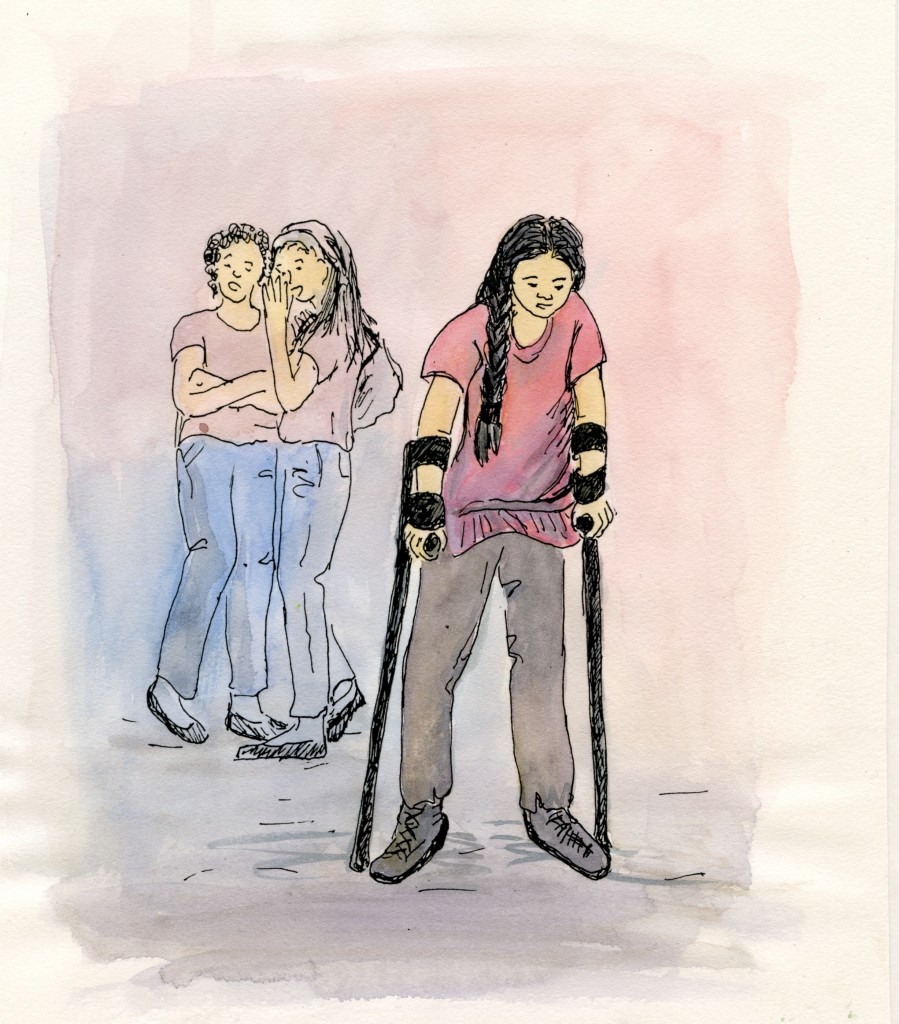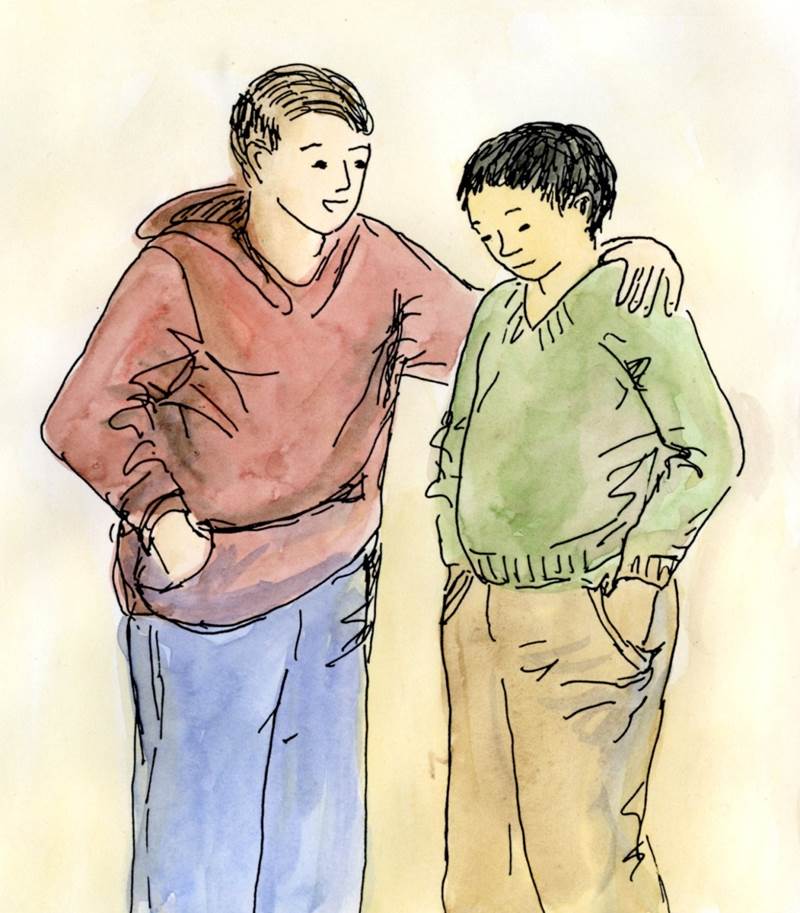What if you or maybe your child were the constant target of accusations of being a terrorist because of faith, assault because of a physical deformity, threats (e.g., classmate yells, “I’m going to beat the *expletive* crap out of you!”), exclusion based on clothing, ridicule, name calling, or humiliation because of photos on social media? These are just a few examples of hurtful behaviors found in recent news. If this was your reality, could you dismiss the burdens – the negative thoughts and emotions –that come with these experiences in order to truly concentrate on solving complex math problems at school? Would you be inclined to raise your hand to contribute to a group discussion on the causes and effects of WWII? How about writing your analysis of symbolism after comprehending the last chapters of The Grapes of Wrath? Would you be in the mood to cooperate with others to document dissection of an earthworm (as cool as that may be!)? With fears and worries occupying your mind, it’s unlikely that even the Teacher of the Year, with near perfect lesson plans, would detect a spark of motivation or the focus and engagement needed for you to learn.

Bullying, grades, and test scores…
It is well known education theory and common sense that students need a sense of safety, security, and belongingness in order to have the frame of mind to develop knowledge and skills. Also, we know domains of development are interrelated, including cognitive, social and emotional. So, it is not surprising that studies link bullying with academic achievement. The United Federation of Teachers published an article that describes several of these studies. For example, Lacey and Cornell from University of Virginia revealed that schools reporting relatively heavy amounts of bullying earned achievement test scores 3 to 5.5 percent lower than other schools. Likewise, UCLA researchers, Juvonen, Wang and Espinoza, studied 2,300 students over three years of middle school and found bullied students’ grades dropped by 1.5 letter grades (e.g., an A student dropped to a B-/C+) compared with non-bullied peers. These findings are particularly disturbing when you consider that 22% of students in middle and high schools experience bullying in a school year (www.stopbullying.gov).
Bullying creates an unwelcome atmosphere where students may develop low self-esteem and feel afraid, depressed, lonely, shame, anxious, worried and unmotivated with a negative view of school, so of course, bullying may lead to missed opportunities to learn (and thus, low achievement). Low class participation, skipping class, and dropping out of school are examples of consequences of bullying. In addition, poor achieving students are sometimes perceived as less capable than their peers; therefore, low expectations are set for them. Outcomes can include low grades and test scores, perpetuating the continuation of factors such as low self-esteem that contribute further to underachievement. We should also mention that bullying negatively affects others. Bystanders, and even bullies themselves, may be distracted from learning by the fallout bullying causes.
Optimizing School Climate…
Despite the fact that many schools are challenged by time constraints, lack of resources, the complexities of bullying, and the pressures that come with accountability for student progress, we can’t afford to ignore the importance of optimizing the school climate in ways that reduce bullying.
What can schools do? According to CASEL (Collaborative for Academic, Social, and Emotional Learning), bullying can be prevented or reduced with “effective classroom instruction, student engagement in positive activities in and out of the classroom, and broad parent and community involvement in program planning, implementation, and evaluation.” Similarly, in a brief published by National School Climate Center, researchers at the Harvard Graduate School of Education (two of whom are also authors of HEAR), suggest six strategies to impact school climate that involve student engagement and teaching, planning, evaluating, and partnering with parents/guardians, (Weissbourd, Bouffard, & Jones, 2013). The six strategies are as follows:
- Place a high priority on teacher-student relationships. Relationship mapping can facilitate this endeavor by helping educators identify students who do not have at least one positive relationship with an adult in the school. These students can then become the focus of deliberate relationship-building. For more information about relationship mapping, visit Making Caring Common.
- It seems so simple. Adults are often influential and students are watching; therefore, adults should model respectful behavior. Students notice how their teachers treat others, how they deal with frustration or anger, how they include everyone and celebrate differences, how they discuss social injustices in the world and how to solve them, and how they take time to get to know and care for their students.
- Be intentional about teaching and giving students opportunities to practice prosocial skills. Help them learn ways to regulate their emotions and how to use strategies to prevent and respond to bullying. Look for ways to integrate teachable moments and well-crafted lessons throughout all facets of daily school life.
- Use disciplinary strategies that teach appropriate behavior. Hold students accountable but provide guidance and support in ways that meet their needs. Weissbourd, Bouffard, and Jones point out that the best consequences are “constructive and instructive.” For example, a student who disrespects another’s property is encouraged to take responsibility for repair and also learns how to apply healthier strategies for the management and expression of his or her emotions in the future.
- Regularly assess school climate. Surveys are useful for collecting data to determine what needs to be done and for evaluating whether these efforts are effective. The HEAR Student Survey as well as Making Caring Common School Surveys are useful tools.
- Finally, empower students to lead positive change – to take personal responsibility and stand up to bullying. Activism does not have to be complicated, but the idea is for bullying to become unacceptable and uncool school-wide and for students to DO SOMETHING – not just let hurtful behavior continue. Equip students with good strategies for improving the school culture. For example, students can include peers who are regularly excluded at the lunch table. They can talk to a trusted adult if they think students are being stereotyped or excluded. They can lead efforts to stop the spread of hurtful text messages or social media posts. They can partner with faculty and administration to make school the best it can be for everyone. HEAR offers many other practical ideas to inspire students to take action.
We are confident that if children’s social and emotional needs are met in a safe and supportive learning environment – free of the distractions that come with bullying, they will be motivated to earn the grades and test scores that they are capable of earning.
References
Mcadoo, M. (2012, March 8). Bullying takes an academic toll, too. United Federation of Teachers. Retrieved from http://www.uft.org/insight/bullying-takes-academic-toll-too.
Weissbourd, R., Bouffard, S.M. & Jones, S.M. (2013). School climate, moral and social development. In Dary, T. & Pickeral, T. (ed) (2013). School Climate: Practices for Implementation and Sustainability. A School Climate Practice Brief, Number 1, New York, NY: National School Climate Center. Retrieved from http://project-hear.us/wp-content/uploads/2015/09/School-Climate-and-Moral-and-Social-Development.pdf.
What is social and emotional learning? (no date). Retrieved from http://www.casel.org/social-and-emotional-learning/

One thought on “Learning with the Burdens of Bullying”